Shotguns are based on a lineage that stretches back more than 500 years. Henry VIII, King of England, was known to possess more than 40 of what were then referred to as “haile shotte peics” (sic) which blasted chunks of lead down a smoothbore barrel. Ironically, Henry’s successor Edward VI signed an act in 1548 banning weapons that fired “hayle shot or any more pellotts than one at a time,” claiming they were too powerful to be used for hunting. (Of course, Lords of Parliament and other nobility were exempt from the law. Sounds familiar, doesn’t it?) Regardless of the simplicity and potency of the shotgun, quite a few modern-day shooters still struggle with mastering it. Some believe “grin and bear it” is the only way to deal with a shotgun’s recoil, and others assume the spread of the pellets will overcome their total lack of training — both of these are myths.
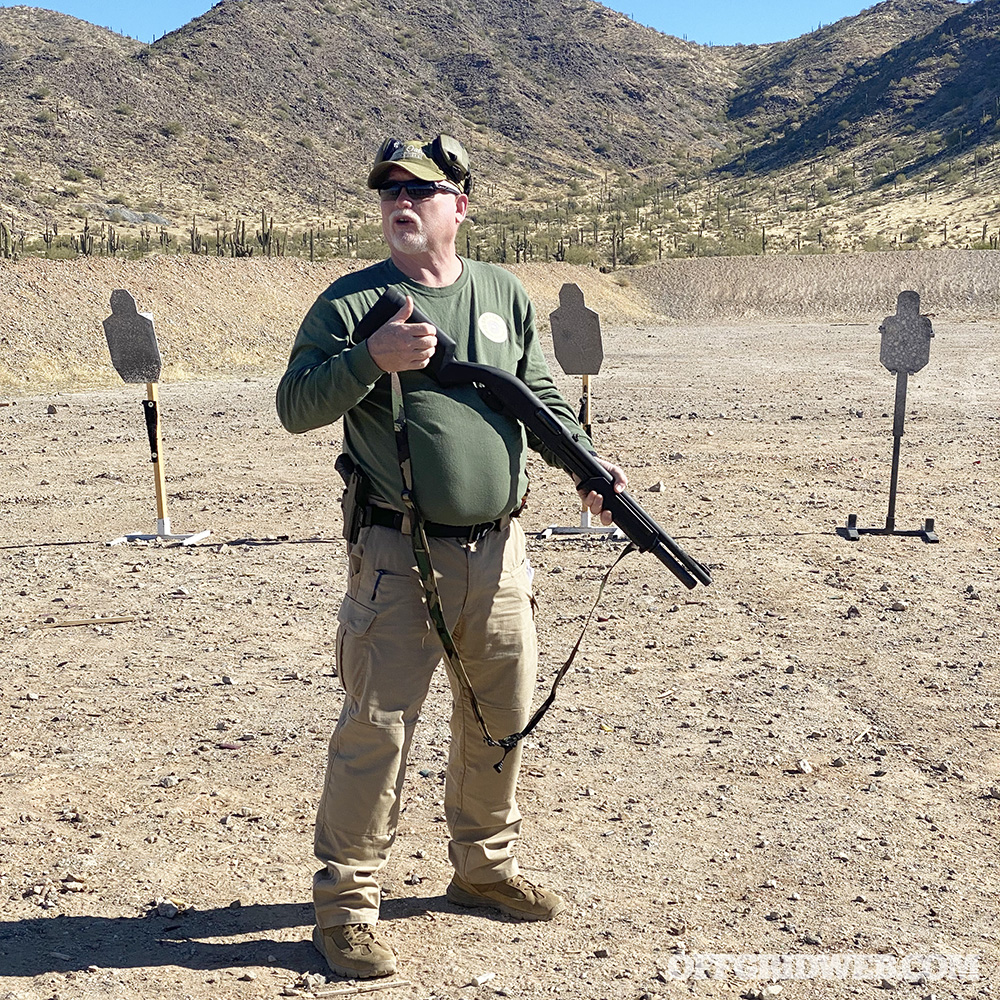
Above: Rob Haught has spent decades teaching shotgun skills to many prominent agencies and units, including the FBI’s Hostage Rescue Team (HRT).
Training with Symtac
To learn how to make the most of my pump shotgun, I took a two-day Shotgun Skills class from Symtac Consulting, run by father-son duo Rob and Matt Haught. I previously trained under Matt at a local shotgun event, which I wrote about in Issue 21 of Concealment magazine; Rob has worked in law enforcement for more than 34 years, and travels the country teaching shotgun skills to military units and federal agencies. The Haughts are some of the most renowned and experienced shotgun instructors in the country.
Symtac’s curriculum is founded on the push-pull technique. Rather than leaning into the recoil and pulling the gun hard into the shoulder, students were instructed to apply opposing tension to the gun, pushing forward with the support hand and pulling back with the dominant hand, much like drawing a bow. The buttstock rests lightly on the shoulder, and the push-pull tension is applied just before pressing the trigger. Cycling the action on a pump shotgun naturally sets up the next push-pull. It’s shocking how much this reduces felt recoil — students quickly went from staggering onto their heels with each shot to effortlessly firing multiple shots from a rock-solid stance.
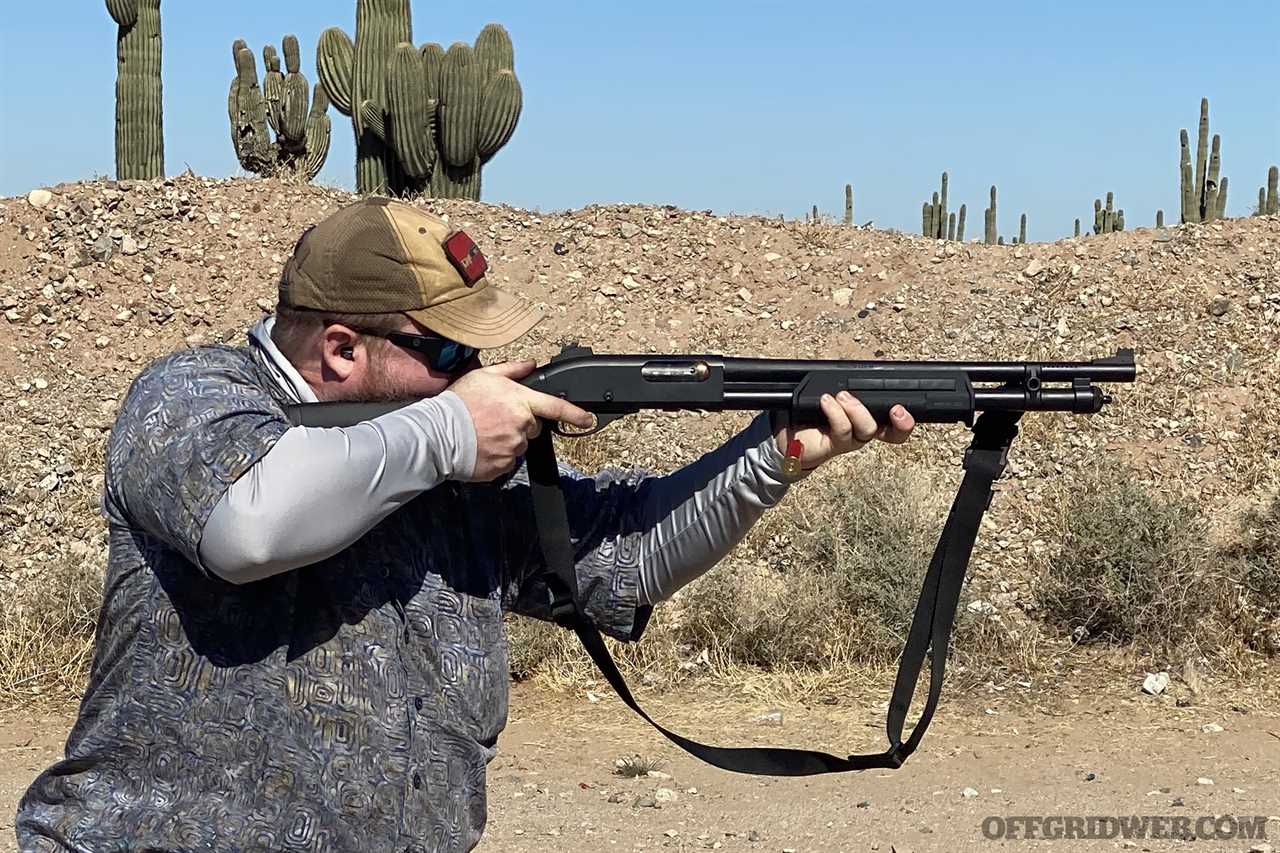
Above: While demonstrating the push-pull technique, Matt Haught kept his Vang Comp modified Remington 870 stable during multiple rapid-fire shots.
Of course, there’s much more to running a shotgun than recoil management. Reloading is another inherent challenge, so we practiced loading from loose rounds in a pocket and from sidesaddle carriers. It’s advised to load the chamber directly first — holding the shell laterally between the index and pinky fingers, rather than pinching with thumb and index — and then top off the mag. We learned how to stage our ammo in a sidesaddle for faster reloads, placing two shells brass-up for over-the-receiver chamber loads and the rest brass-down for the mag tube. After many reps, loading became second nature, and students were replacing each spent round without hesitation.
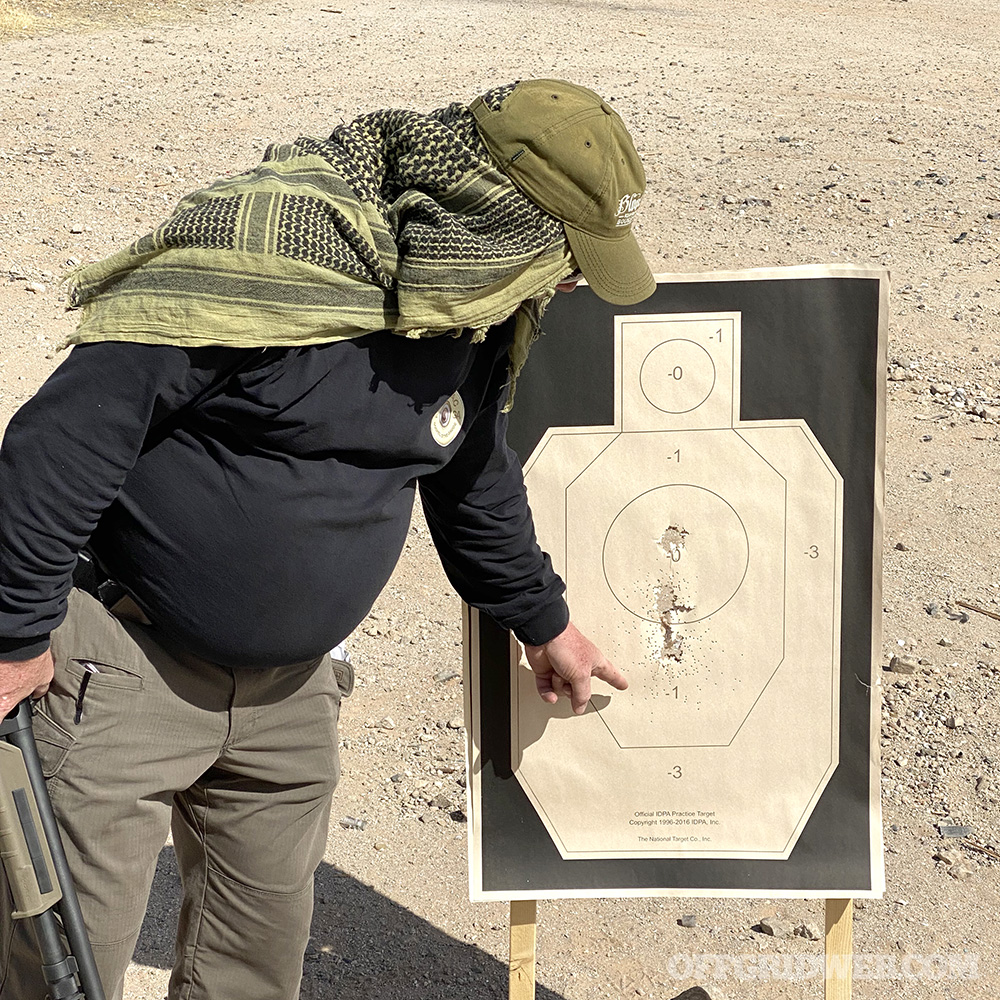
Above: Each student patterned their shotgun and ammunition at various ranges to determine the spread pattern that should be expected. In a defensive shooting, the impact of every bullet must be justified in front of law enforcement officers and/or a jury, and pellets are no different.
On day two, we discussed “zones of employment” (i.e. engagement distances) for a shotgun, as well as ammo selection. “Bird shot is for birds, not people,” Rob explained succinctly. Buckshot shines in the 5-to-15-yard range, but some loads (e.g. Federal FliteControl) are still effective far beyond 25 yards. It’s critical to examine the shot pattern of various loads in your gun, since each performs differently, and too much spread can cause collateral damage. Slugs are situational — have a few on hand, but use them cautiously and be mindful of over-penetration. Never alternate loads inside the mag tube; consciously choose the right load for the situation.
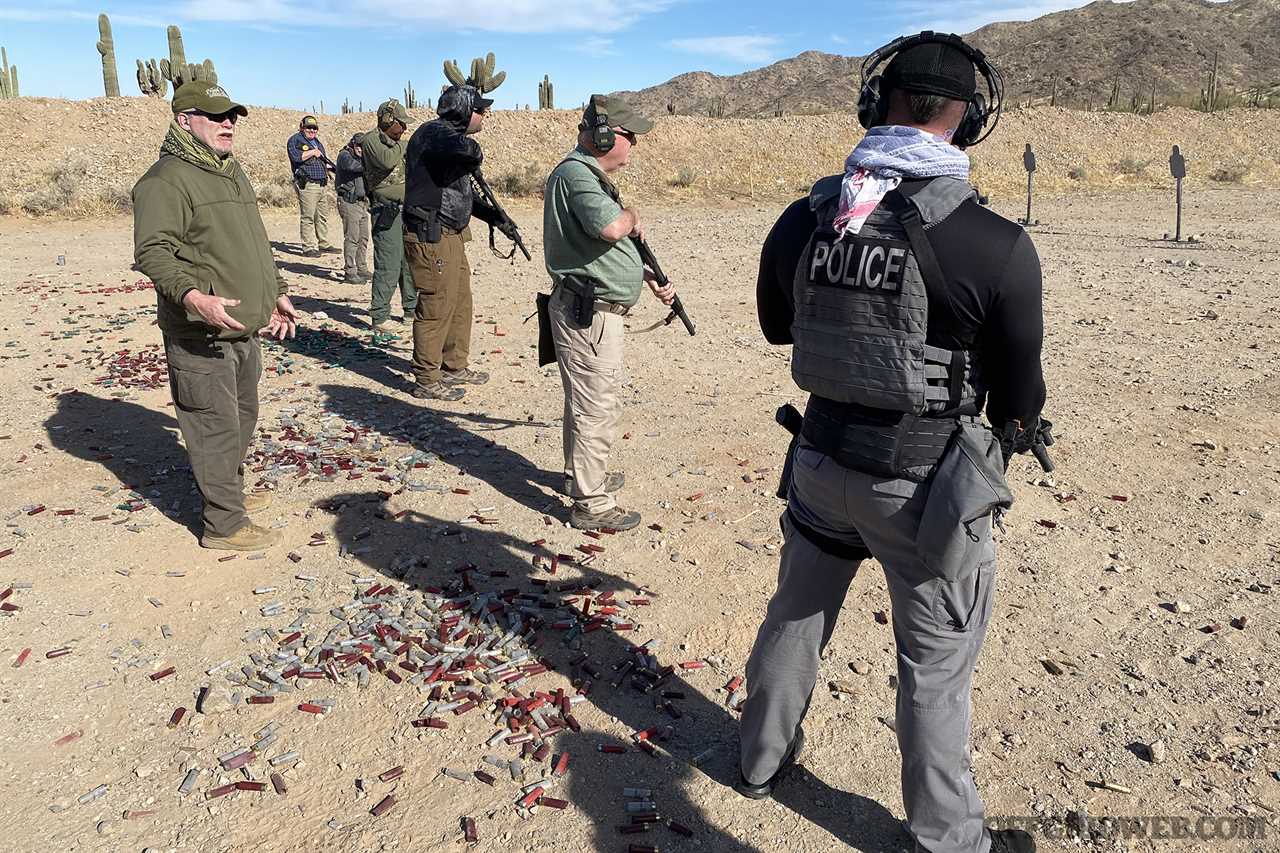
Many drills were covered, incorporating turns, movement, multiple targets, and even shotgun-to-pistol transitions, but the “Shoot, Scoot, and Load Boogie” was especially memorable. Each student walked towards a target, fired on command, and then began walking backward. The goal was to be able to walk back and forth continuously, listen for commands, and load during down time to keep the gun from ever going empty. This challenged our dexterity and simulated the stress of reloading during a real fight.
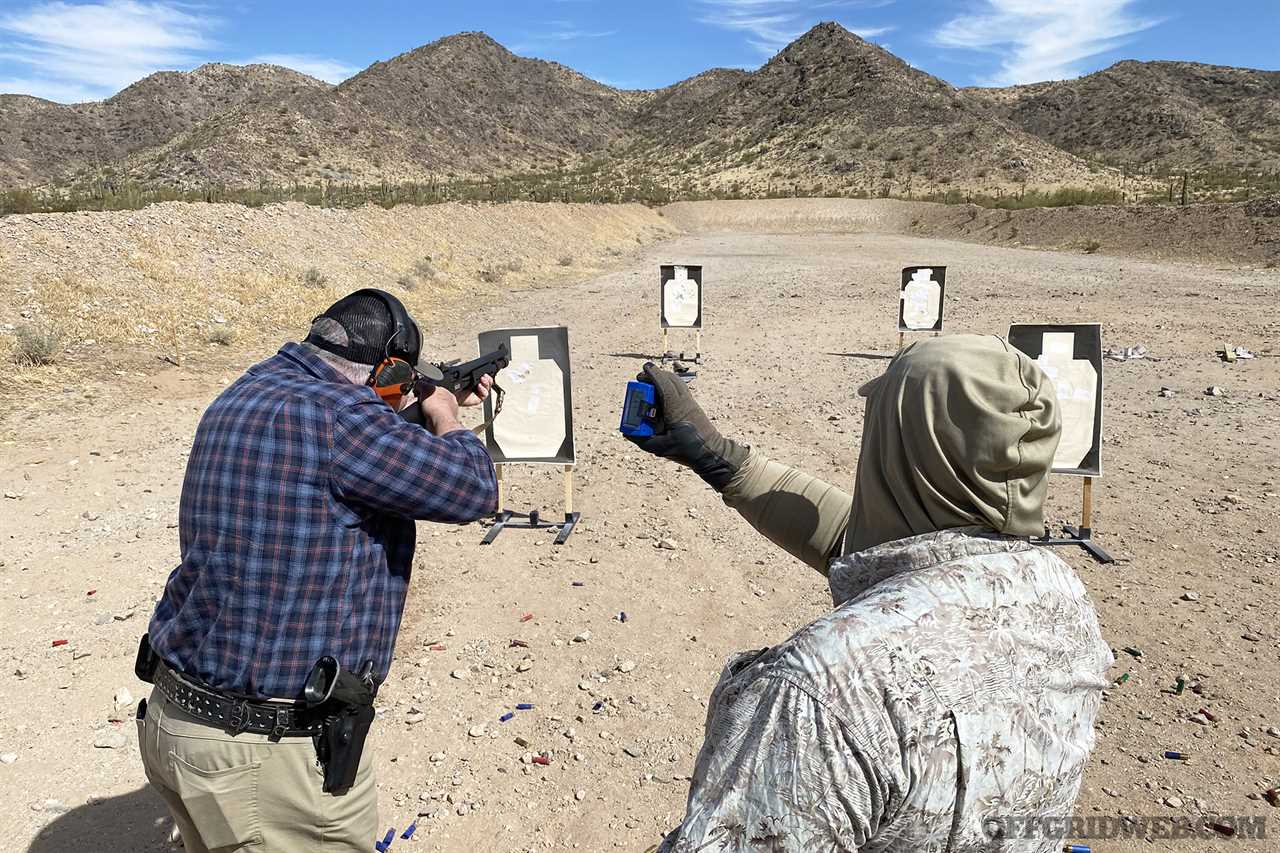
Above: At the end of day two, students competed against each other to test our shooting, reloading, and recoil management skills under stress.
Closing Thoughts
After two full days on the range and more than 500 shells fired — many of which were full-power buckshot and slugs — I was pleasantly surprised to find my shoulder wasn’t sore or bruised at all. The Symtac push-pull method works wonders, making my 12-gauge feel more effective and more fun. Beyond that, I learned a ton about loading methods, ammo selection, and other intricacies of shotguns. Although the underlying smoothbore formula is ancient, it’s still extremely effective in the 21st century. For more information on Symtac Consulting shotgun classes throughout the U.S., go to sym-tac.com.
The post Symtac Shotgun Class Review: Don’t Fear the Recoil appeared first on RECOIL OFFGRID.
By: Patrick McCarthy
Title: Symtac Shotgun Class Review: Don’t Fear the Recoil
Sourced From: www.offgridweb.com/preparation/symtac-shotgun-class-review-dont-fear-the-recoil/
Published Date: Wed, 02 Nov 2022 20:55:20 +0000
------------------------
Did you miss our previous article...
https://bushcrafttips.com/bushcraft-news/how-to-store-flour-long-term-what-you-need-to-know
 What is BushcraftSurvival SkillsToolsVideosBushcraft CampsBushcraft KitsBushcraft ProjectsPrivacy PolicyTerms And Conditions
What is BushcraftSurvival SkillsToolsVideosBushcraft CampsBushcraft KitsBushcraft ProjectsPrivacy PolicyTerms And Conditions
